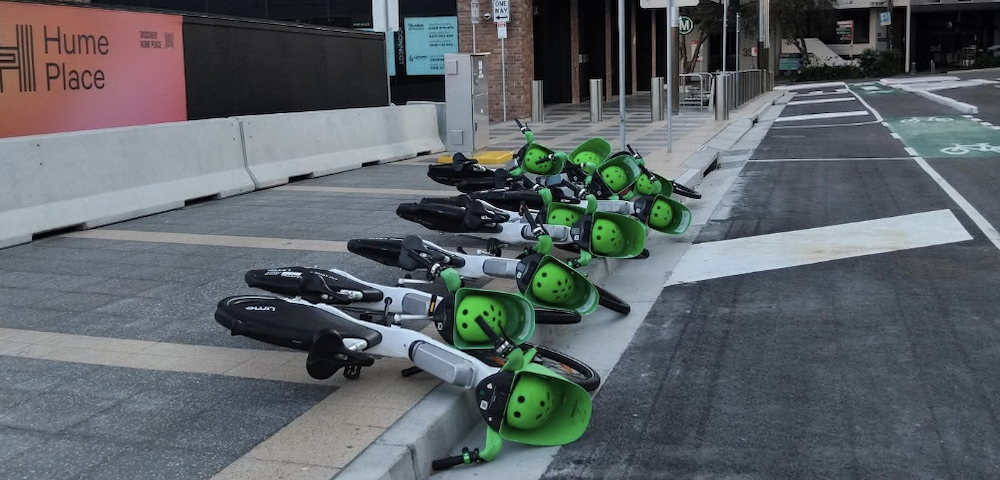
How I stumbled into a career with the National Parks and Wildlife Service
Sydneysider: A personal journey
The old North Head Quarantine Station, part of Sydney Harbour National Park, is one of our city’s most fascinating historic sites. They started developing it as a maritime quarantine facility in the 1830s, but by the 1970s, the decline of the passenger trade had made it redundant. Nowadays it’s a hotel, conference centre, and restaurant complex and they market it as ‘Q Station’ so as not to put people off. It was handed over to the National Parks and Wildlife Service in March 1984 and I started leading historical tours there when it opened to the public a few days later.
The Q Station was (and is) a very fragile historic site. It had over 60 old, vulnerable and unoccupied buildings, so unfettered public access was out of the question. Alas, the place had been handed over by the Federal Government to the state in a bit of a hurry and the State Environment Minister, having made a bold promise to “open” it to the public, had to find a way of keeping it simultaneously closed. Guided tours were the obvious solution, so the NPWS rushed them into place. It wasn’t possible to hold formal public service interviews for a couple of weeks so they advertised tour guide jobs, gave a couple of days on-site training to about 25 people who applied and then selected six of us. I was picked on the strength of an arts degree I’d never used and a quickie maritime archaeology course I’d done when I was driving cabs. The committee mistakenly believed this experience might be relevant to interpreting a maritime quarantine station. And of course, I was a Sydney taxi driver – evidence I could talk the leg off a chair. I had stumbled into a career.
On my first day on the job, very early on a beautiful Sydney morning, I caught a cab from Edgecliff to Circular Quay to catch the ferry to Manly. The cab driver was an African and it was his first day on the job. In 1984 there were hardly any Africans living in Sydney.
“You’re a !Kung, from the Kalahri, aren’t you?” I inquired.
And he was. So I asked him to say some stuff in the amazing !Kung language with its click consonants, and he did. We wished each other luck with our new jobs, but I said he should plan to get out of taxi driving as soon as he could. And then I stepped out of his cab and onto the ferry and sailed off to a career that was to span a couple of decades.
The tours of the station took two long hours and had a very heavy historical emphasis. Each ranger usually did two tours and there was plenty of time between them to research the history of the station and to develop other tours covering the rest of the national park. Soon we’d branched out into wildlife walks and tours of the old underground fortifications ringing the harbour. I spent a very happy three years at the Quarantine Station. I was only working three days a week but those days earned me more money than five of day-shift taxi driving and just walking around such a beautiful place explaining history and nature was a joy.
Flora was an easy gig. In the late winter and early spring the heathland burst into flower, and if you could identify 150 species and explain something of their role in the ecosystem and their response to wildfire, you had a pleasant informal teaching experience. Fauna was harder, because so many native animals are cryptic and nocturnal. To develop my fauna tour I wandered over North Head – and other parts of the park – finding wildlife that could be more or less relied on to be in the right place at the right time. Fortunately, if all else failed, there were ringtail possums. They build football-sized nests called ‘dreys’ which they sleep in during the day, and these are often only three metres from the ground. In their flimsy shelters, ringtails were easy to see and they’d sometimes peek out to take a look at a tour group. And if you knew how to do it, there were lots of interesting native bird species that could be called in close by making little squeaky bird distress calls.
These days, Australian fur seals are quite commonly seen in the harbour but back then they were a rarity. In August ’84, at Store Beach, a couple of us stumbled on something even more unusual – a very sick and emaciated female leopard seal with multiple stab wounds to the face. Crook as she was, she looked capable of biting our legs off on a whim, so we called the veterinary team from the zoo. It was a phenomena they saw occasionally. Leopard seals normally eat penguins, but when they get as far north as Sydney, they run out of penguins and they try catching stingrays and end up with a face full of very painful barb wounds. The zoo’s vet extracted the broken tip of the barb from the seal’s face. It was very sharp and about two centimetres long. I experimentally pricked my thumb and it went completely numb for a couple of hours, so the barb must still have been traces of toxin on it even after being jabbed several times into the unfortunate seal.









